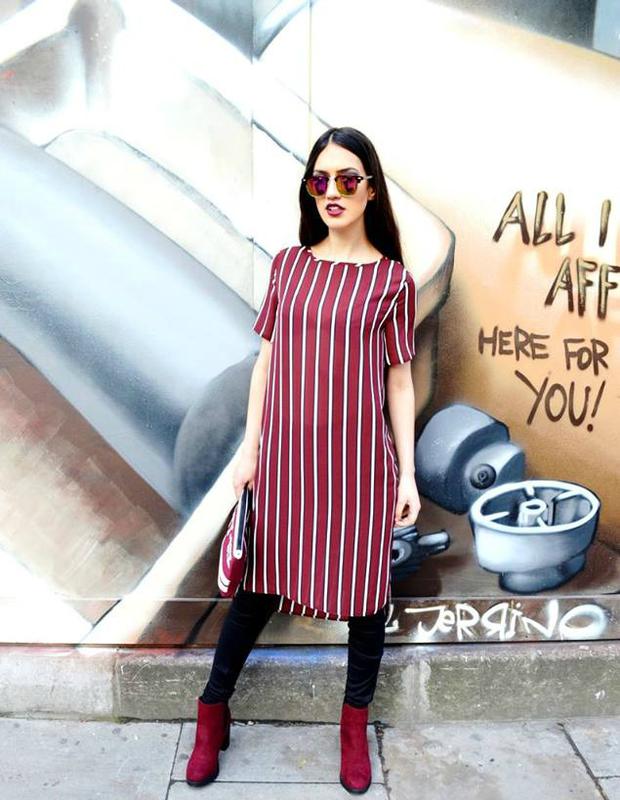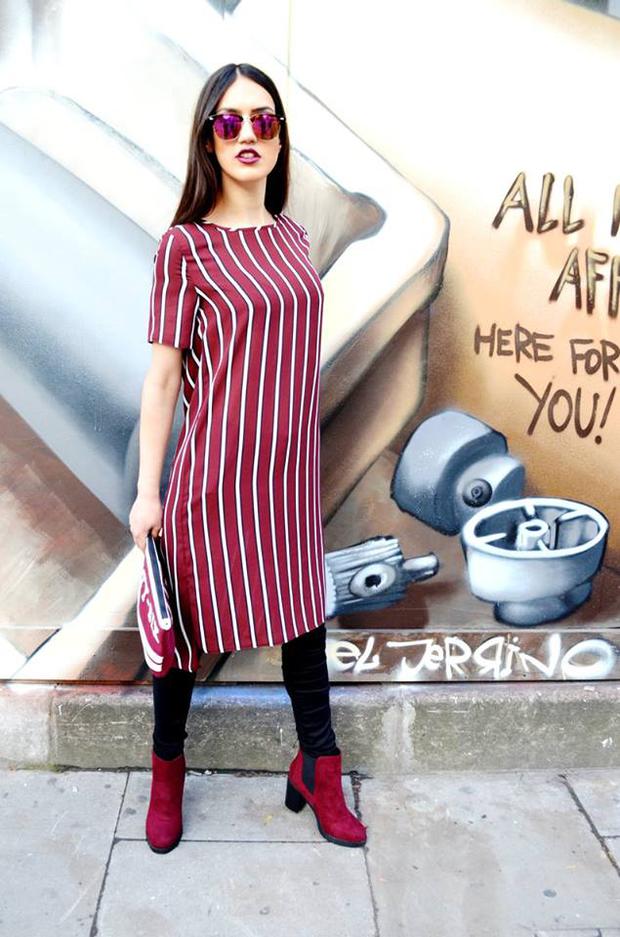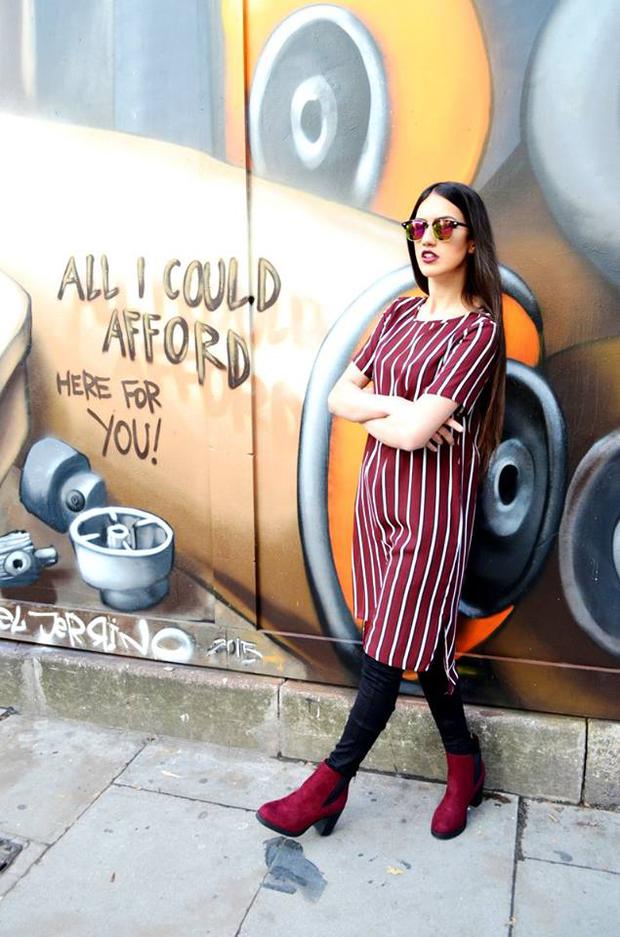In an age defined by technology the power of fashion bloggers in the millennial era has had a lasting influence on consumers, facilitated by the rapid growth of social media and new technologies. In 2015 alone it is reported that 41 % of consumer trends were influenced by their favourite fashion bloggers while a further 23 % of consumers declared that they made direct purchases through their ‘shoppable’ feed rather than go to the site to buy. Creating an inter-relationship between ‘trend setting’ and directly ‘persuading’ consumers to buy their clothes the influence of fashion bloggers on consumers is increasingly prevalent in modern culture. Self-described as the new ‘opium of the masses’ fashion blogs are ‘innovative’ and ‘reliable’ with EWOM (E- Word Of Mouth) an attractive prospect that fashion bloggers offer in their roles as digital influencers to consumers. Consumers cite fashion bloggers as more reliable than traditional marketers because they have the ‘power to make or break a brand’ and are independent super-powers detached from any institutional organizations.

The influence of fashion bloggers on consumers continue to surprise brands who pre-fashion blogs relied on the power of the ‘original supermodels’ to market their products and be attuned to their personal aesthetic. Come 2004 when fashion bloggers burst into the fashion stratosphere brands began to sit up and take notice, disregarding the biased influence of the 90’s supermodels who would not get out of bed for less than 10 K. With bloggers new position as media influencers their attitude towards brands was refreshingly honest and made them an attractive catch for new brands. In turn the newer brands could market their clothing to top digital influencers in the hopes that it would transition into profit. At first the prominence of blogs was minimal and it wasn’t until the mid 2000’s that blogging went mainstream with 50 million blogs being recorded in America alone in 2004. By 2004 fashion bloggers became opinion leaders whose blogs became an alternative voice and new medium- The Online Magazine.
Representing a new age of technology, fashion bloggers roles as opinion leaders curated distinct patterns and trends that targeted potential consumers without stepping a foot outside the door.
The growing presence of social media mid-millennial helped fashion bloggers diffuse their style or opinions through the marketplace much faster because the spread of information was ‘instantaneous’ which led to a decline in traditional blog-based bloggers who had made the transition over to visual blogging on Instagram. The transition to Instagram was in part influenced by the way that consumers now approached trends and was a smart move for the most part with the large majority of consumers admitting to using Instagram as a shopping feed curated by a list of their favourite bloggers. The divide between Instagram and blog based blogs had a direct impact on the way they influenced consumers and it was evident that the two were attracting two completely different audiences. On one hand Instagram bloggers role was to purely provide a visual look at trends that consumers should be directly following and then on the other hand blog-based blogs were more reliable because their content was a direct expose on the ins and outs of a particular brand.

With the rising interest in analyzing the growth and influence of fashion bloggers on consumers, the proliferation of virtual communities- who existed because of their united affinity with digital influencers- became increasingly apparent and demonstrated how powerful fashion bloggers were in the digital age. Nicknamed the digital natives the millennials saw fashion blogs as ‘hubs’ where they could become part of a community and market themselves at the same time too. Many rising fashion bloggers led a dual life; part consumer part influencer the rising fashion bloggers took inspiration from successful fashion bloggers and used it to replicate their own version of success. In turn the original fashion bloggers i.e. Aimie ( Songs of Style) & Chiarra Feggarani ( The Blonde Salad) influenced consumers to become fashion bloggers too because they coveted the ‘dream lifestyle’ that the bloggers seemed to have. Creating a secondary trend the new generation of bloggers outside of the 2000’s focused on influencing other aspiring fashion bloggers rather than directly marketing to a ‘non-blogger audience’ because they had realized that a large majority of their followers were bloggers too.

Fashion bloggers not only influenced consumers through their outfit choices but they also created a social acceptance code. The social acceptance code determined what trends were ‘hot’ and what trends were ‘not to show the consumers what was on trend. As opinion leaders fashion bloggers are able to both set and discard trends without need for ‘social consent’ unlike catwalk designers whose collections are largely based on public consensus. The social acceptance code also creates a hierarchical system of consumption whereby the more influential the blogger is the more they can influence their target market audience to adopt or discard the same trends.
The influence of fashion bloggers on their consumers has caused controversy in the past with well known bloggers like Zoella’s authenticity questioned by her fans who discovered the trends that she set and the subsequent successes- i.e. Book & Makeup- were not solely her own, enlisting a team to help her market her brand. But dishonesty is nothing new and there are still many fashion bloggers who will be inauthentic in order to market products and stay on good terms with a brand just like the ambassadors for numerous past brands who did it for the money and not the love and that is what you have to look out for. Trusting a blogger with your personal style is one thing but reading a dishonest review or a sponsored post that has been claimed as her own is something that should be avoided when influencing our consumers.

How Do You Think That Fashion Bloggers Influence Their Consumers And Do They Influence You?
Photographer- Jumanna Khanom
Shirt & Chelsea Boots- Primark
Bag- Topshop
Glasses- Market
Leave a Reply